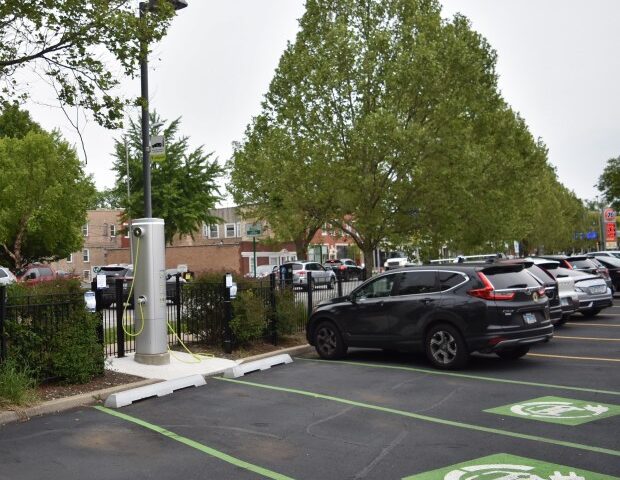The U.S. Environmental Agency made some changes to faulty arsenic data that Earthjustice, a public interest environmental law organization, found for the coal ash site in the Town of Pines – which has been contaminated for over two decades.
Earthjustice Senior Counsel Lisa Evans, who has reviewed data from hundreds of coal ash contaminated sites, said the Town of Pines has reported some of the highest numbers of arsenic she’s ever seen.
“The remedy for contaminated soil is removal of the contaminated soil and replacement in the yard with clean soil. This is not rocket science. This is not difficult to do. This should not have taken this long,” Evans said.
Earlier this year, the EPA announced it would conduct additional soil sampling in the Town of Pines. With that announcement, Earthjustice and other stakeholders wrote a letter to the EPA that while it collects the samples it should “correct significant errors” in the data collected from the soil to “ensure a thorough and protective cleanup of contaminated soil.”
A consultant hired by NIPSCO in 2016 completed a feasibility study for the cleanup of coal ash contamination in the Town of Pines. The feasibility study was required under the Comprehensive Emergency Response, Compensation and Liability Act, according to the letter.
In its study, the consultant “performed a flawed assessment” of the “background” group, which represents soil that’s not contaminated by coal ash, concentrations of toxic coal ash constituents. The consultant found a very high level of arsenic in the town’s “background” soil, which resulted in “an inappropriate and likely dangerous cleanup standard for soil on residential properties,” according to the letter.
“If you have a sample that’s documented to have coal ash in it, it should not be in that background sample group. In fact, the arsenic in that sample was the highest in the whole group,” Evans said.
In its study, the consultant found that the arsenic level in the “background” soil was 30.1 parts per million. The safe level for arsenic, according to the EPA, is 0.67 parts per million. The cleanup level set for the Town of Pines is nearly 45 times that safe level, according to the letter.
The consultant’s background data was skewed by two samples that had unusually high levels of arsenic, Evans said. If the data isn’t corrected, Evans said, many residential properties won’t have their soil cleaned because it won’t meet the excess level of arsenic established in the study.
“The agency commonly requires cleanup to a ‘background’ level established in a feasibility study. Thus, it is extremely important to establish an honest and accurate background level so that the cleanup provides a high and appropriate level of protection to residents of the Town of Pines,” according to the letter.
Danielle Kaufman, an EPA spokeswoman, said the agency removed one data point from the background data set “because it might not have been representative of background levels for arsenic and thallium in the area.”
The agency recalculated the background threshold value, Kauffman said, which will result in the background threshold values for arsenic and thallium being slightly reduced and one previously sampled property will become eligible for cleanup.
“However, because this reduction in cleanup levels will be relatively small, the number of additional eligible properties is also expected to be small,” Kauffman said.
In the 1990s, the NIPSCO Generating Station in Michigan City and the Bailly Generating Station in Burns Harbor, which has since closed, didn’t have room on site for all the coal ash the stations generated, Evans said.
This March 4, 2017 file photo shows a hyperboloid cooling tower at the NIPSCO Michigan City Generating Station, a coal- and natural gas-fired power plant, which is set to close by 2028.
The companies used Yard 520, a landfill in the Town of Pines, to dump its coal ash, Evans said. But, the landfill was ultimately found to have leaked into the soil, Evans said. Additionally, the coal ash was made available to homeowners to use as a substitute for soil, she said, which contributed to the contamination of the drinking water.
Coal ash contains high levels of toxic heavy metals, which could cause cancer, according to Earthjustice.
“People in the affected area in the Town of Pines could no longer use their private wells because those wells were contaminated by the coal ash, whether it was from the leaking landfill, or the leaking from the roads or the leaking from coal ash in people’s yards,” Evans said.
The EPA has been aware of the coal ash contamination in the Town of Pines since May 2002. At that time, officials tested the residential water wells based on high levels of the metals boron and molybdenum found in the water wells by the Indiana Department of Environmental Management, according to the agency’s website.
The metals came from coal combustion by-products, which is the result of burning coal to make electricity, composed primarily of fly ash that was disposed of in Yard 520, according to the agency.
Other areas in town were also identified as having coal combustion by-product materials, including residential yards where fly ash was used as fill material and roads where bottom ash was used as bedding and surface material, according to the agency.
By 2006, the area was declared a Superfund site, Evans said. The first thing the Superfund site process addressed was to get clean water to the Town of Pines, which included running a water line to the Town of Pines from Michigan City.
NIPSCO has conducted soil sampling on private properties in the town since 2014 under the direction of the EPA, according to the agency’s website. Since then, about 200 properties have been tested for the presence of coal ash.
The testing showed evidence of coal ash-related metals “at levels capable of impacting human health at a few of the properties sampled,” according to the website.
EPA officials are still working to clean the coal ash in the soil, roads, playgrounds and residential yards in the Town of Pines, Evans said.
“Superfund sites often take many, many years to resolve, but this one, I think you can say this one has been moving really slowly,” Evans said. “We should not be talking about this in 2024 when the contamination was discovered in 2002. It’s really unconscionable that the folks in the Town of Pines have had to live with this contamination for so long.”
Another issue residents have shared with EPA officials, Evans said, is sample collection. To collect samples, EPA officials divide a property into four or five areas, collect parts of the soil, and then mix that soil together.
“What that means is that if you find one of the samples in this area of the yard is very high in arsenic, for example, you’re going to be mixing it with other samples that may not have that level of arsenic. The conclusion is that if they diluted the hot spot enough, there will be no cleanup done in the yard,” Evans said.
Evans said EPA officials have told residents that it tests gardens and playground areas differently. But Evans said children play throughout a backyard and some play structures can be moved throughout a backyard, so it’s important to test each part of the yard without mixing the samples.
The challenge ahead, Evans said, is that EPA officials need permission to sample a residential yard but Town of Pines residents are reluctant to cooperate because of skewed data and mistrust in the agency’s handling of the cleanup.
“There have been these mistakes that the EPA has made. There’s been lack of oversight by the EPA. There’s been what people perceive as a less than rigorous sampling of properties,” Evans said. “These issues need to get resolved in order for the process to go forward.”
The residents have asked to hire their own technical adviser, who would be well-versed in the contaminants, sampling and clean-up processes, provide advice to the community, and oversee EPA actions.
“A technical advisor who can provide the oversight that may be lacking by EPA and to have the best interest of the community is a real advantage and a much-needed resource for the community,” Evans said.
Earthjustice and EPA officials have a meeting scheduled for Aug. 6, Evans said, where the organization will provide additional information about the data.
“Let’s just hope the EPA has an open mind and is willing to reconsider some of the decisions they’ve made on this cleanup,” Evans said.
akukulka@post-trib.com





